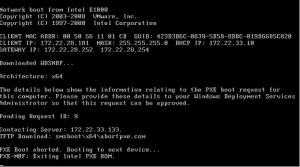How to Create a Secure Password: Protecting Your Online Identity


How to Create a Secure Password: Protecting Your Online Identity


Introduction
In today’s digital world, protecting your online identity is of utmost importance. One of the fundamental ways to safeguard your accounts and personal information is by creating strong and secure passwords. In this tutorial, we will guide you through step-by-step instructions on how to create a secure password that will help defend against unauthorized access and protect your online presence.
1. Avoid Common Mistakes
Before we delve into the process of creating a secure password, let’s first address some common mistakes to avoid:
A. Avoid Obvious Choices
Steer clear of easily guessable passwords such as “password,” “123456,” or “qwerty.” These common choices are among the first that hackers try when attempting to gain unauthorized access to accounts.
B. Don’t Use Personal Information
Avoid including personal information like your name, birthdate, or address in your passwords. Hackers can easily find this information, making it easier for them to crack your password.
C. Don’t Reuse Passwords
Reusing passwords across multiple accounts is a risky practice. If one account gets compromised, all your other accounts become vulnerable. Use unique passwords for each online service or platform you use.
D. Steer Clear of Dictionary Words
Avoid using complete words found in dictionaries or commonly used phrases. Hackers use automated programs that can quickly run through dictionary words, making them vulnerable to brute-force attacks.
2. Optimal Password Length
One of the key factors in creating a secure password is its length. Longer passwords are generally more secure. Aim for a minimum of 12 characters, but the longer, the better.
3. Combine Letters, Numbers, and Symbols
To enhance the complexity of your password, use a combination of letters (both uppercase and lowercase), numbers, and symbols. Mixing these elements makes it more difficult for hackers to crack your password using automated tools.
4. Use Passphrases
Passphrases are longer combinations of words or phrases that are easy to remember but difficult to crack. Consider using a memorable phrase and adding variations, such as numbers and symbols, to make it even more secure. For example, “I love hiking in the mountains!” can become “IL0veH1k1ng!nTh3Mount@ins.”
5. Utilize Password Generators
Password generators are online tools that create strong and random passwords for you. These tools can generate complex passwords that are difficult to guess or crack. Use reputable password generator websites or built-in password generators in password management applications.
6. Implement Two-Factor Authentication (2FA)
Two-factor authentication adds an extra layer of security to your online accounts. In addition to your password, it requires a second method of verification, such as a fingerprint scan, a code sent to your mobile device, or a hardware security key. Enable 2FA whenever possible to provide an additional safeguard against unauthorized access.
7. Use a Password Manager
Managing multiple complex passwords can be challenging. A password manager is a secure application that stores and organizes your passwords in an encrypted database. It allows you to generate and store unique passwords for each of your accounts, eliminating the need to remember them all. Popular password manager options include LastPass, Dashlane, and KeePass.
8. Regularly Update Your Passwords
Even the strongest passwords should be updated periodically. Set a reminder to change your passwords every few months or whenever you receive notifications of a data breach. Regularly updating your passwords reduces the risk of unauthorized access to your accounts.
Conclusion
Creating a secure password is essential in protecting your online identity and personal information from unauthorized access. By avoiding common mistakes, using optimal password length, combining letters, numbers, and symbols, utilizing passphrases, and employing password generators, you can enhance the security of your accounts. Implementing two-factor authentication, using a password manager, and regularly updating your passwords further strengthens your online defenses. Remember, a strong and secure password is a vital step in safeguarding your digital life.








